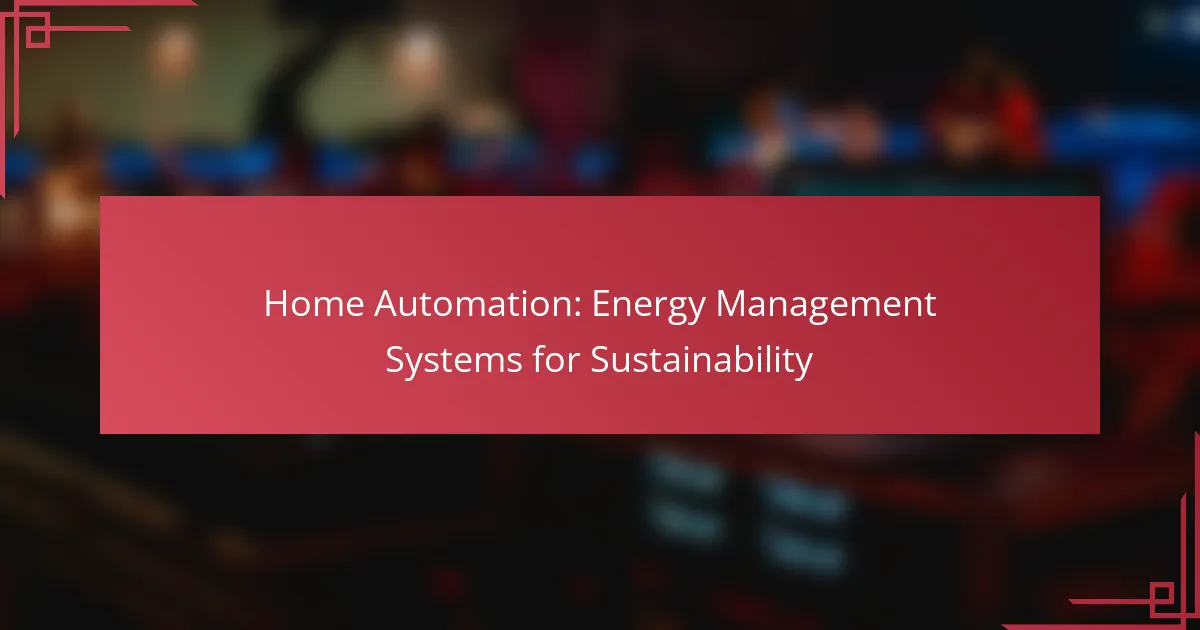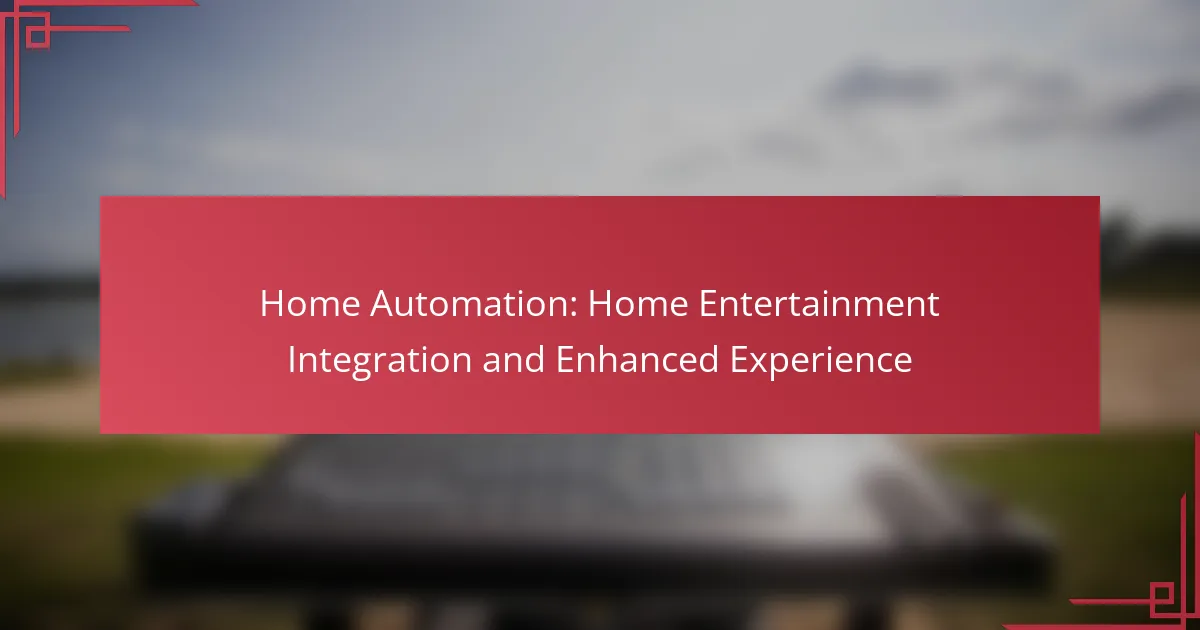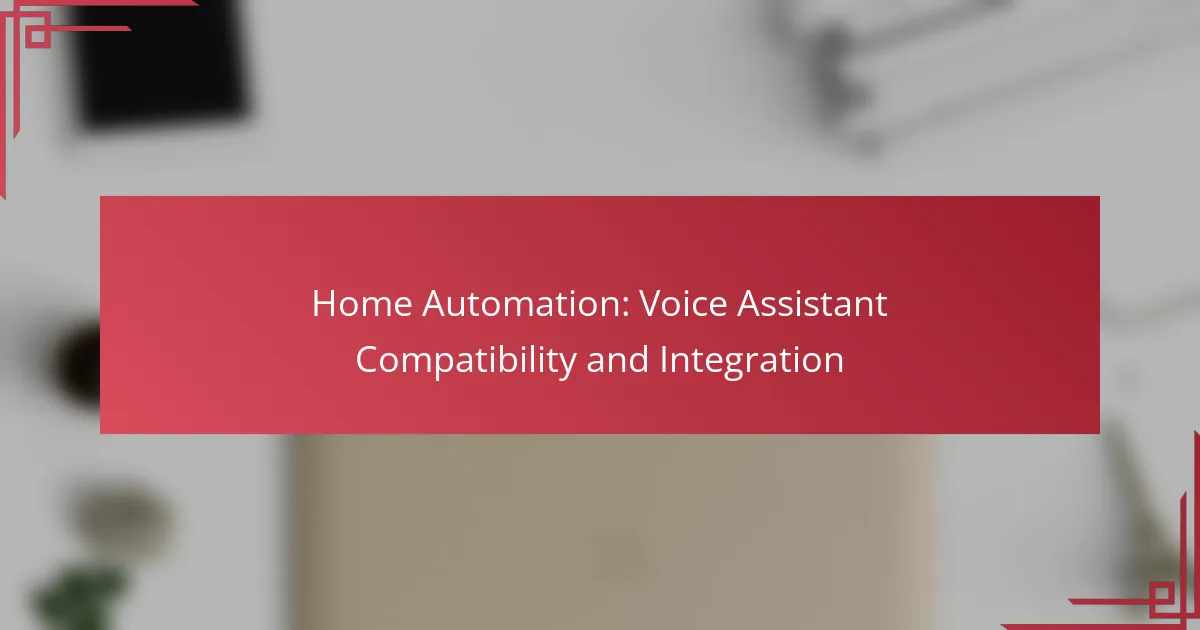Energy management systems (EMS) in home automation play a crucial role in promoting sustainability by optimizing energy usage and reducing costs. By enabling homeowners to monitor and control their energy consumption in real-time, these systems not only lead to financial savings but also contribute to a lower carbon footprint. Integrating smart technology, EMS enhances overall energy efficiency and supports environmentally friendly living.
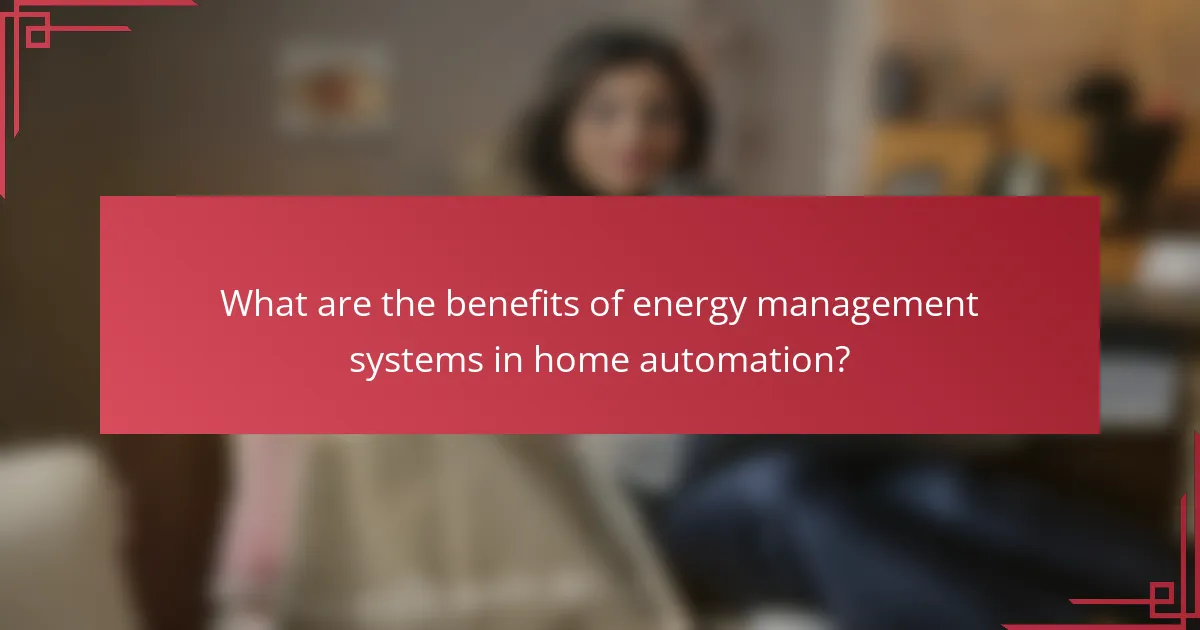
What are the benefits of energy management systems in home automation?
Energy management systems (EMS) in home automation provide significant advantages by optimizing energy usage, reducing costs, and enhancing sustainability. These systems enable homeowners to monitor and control their energy consumption effectively, leading to both financial savings and environmental benefits.
Reduced energy costs
One of the primary benefits of energy management systems is the reduction in energy costs. By automating the control of heating, cooling, and lighting, homeowners can minimize energy waste and take advantage of off-peak electricity rates. For instance, scheduling appliances to run during lower-cost periods can lead to savings of 10-30% on monthly bills.
Additionally, many EMS solutions offer insights into energy usage patterns, allowing homeowners to identify high-consumption devices and make informed decisions about usage. Simple actions, like replacing old appliances with energy-efficient models, can further enhance savings.
Enhanced sustainability
Energy management systems contribute to enhanced sustainability by promoting efficient energy use and reducing carbon footprints. By optimizing energy consumption, these systems help decrease reliance on fossil fuels and lower greenhouse gas emissions. Homeowners can track their energy usage and set goals for reduction, fostering a more sustainable lifestyle.
Moreover, integrating renewable energy sources, such as solar panels, with EMS can maximize their efficiency and usage. This combination not only supports sustainability but can also lead to energy independence over time.
Improved comfort and convenience
Energy management systems significantly improve comfort and convenience in homes. Automated controls allow for precise adjustments to heating and cooling, ensuring that spaces are comfortable when occupied and saving energy when they are not. For example, smart thermostats can learn user preferences and adjust temperatures accordingly.
Additionally, EMS can integrate with smart home devices, providing seamless control through mobile apps or voice commands. This level of automation enhances the living experience by allowing homeowners to manage their environments effortlessly.
Increased property value
Implementing an energy management system can increase a property’s value. Homes equipped with advanced energy management features are often more attractive to buyers who prioritize energy efficiency and sustainability. This can lead to higher resale values in competitive markets.
Furthermore, energy-efficient homes may qualify for tax incentives or rebates, adding to their appeal. Potential buyers often view these systems as a long-term investment that can lead to ongoing savings.
Real-time energy monitoring
Real-time energy monitoring is a crucial feature of energy management systems, allowing homeowners to track their energy consumption as it happens. This immediate feedback enables users to make quick adjustments to their habits and identify areas for improvement.
Many systems provide detailed analytics and reports, highlighting trends and anomalies in energy usage. By understanding these patterns, homeowners can implement strategies to reduce consumption, such as turning off devices when not in use or optimizing appliance schedules.

How do energy management systems work?
Energy management systems (EMS) optimize energy consumption by monitoring and controlling energy use in real-time. They integrate various technologies to analyze data and automate actions that enhance energy efficiency, ultimately supporting sustainability goals.
Integration with smart devices
Energy management systems work by connecting with smart devices such as thermostats, lighting systems, and appliances. This integration allows for centralized control and monitoring, enabling users to adjust settings based on real-time energy data.
For example, a smart thermostat can learn user preferences and adjust heating or cooling automatically, reducing energy waste. Compatibility with devices that support protocols like Zigbee or Z-Wave is essential for effective integration.
Data analytics for energy usage
Data analytics in energy management systems involves collecting and analyzing energy consumption data to identify patterns and inefficiencies. By examining historical usage and real-time metrics, users can gain insights into their energy habits.
These insights can help in making informed decisions about energy use, such as identifying peak consumption times or recognizing devices that consume excessive energy. Visualization tools often accompany analytics, making it easier to interpret data and spot trends.
Automated energy-saving actions
Automated actions in energy management systems help reduce energy consumption without manual intervention. For instance, systems can automatically dim lights or adjust heating based on occupancy detected through sensors.
Setting up schedules for devices to operate during off-peak hours can also lead to significant savings. Users should ensure that automation settings align with their daily routines to maximize efficiency and avoid unnecessary energy use.
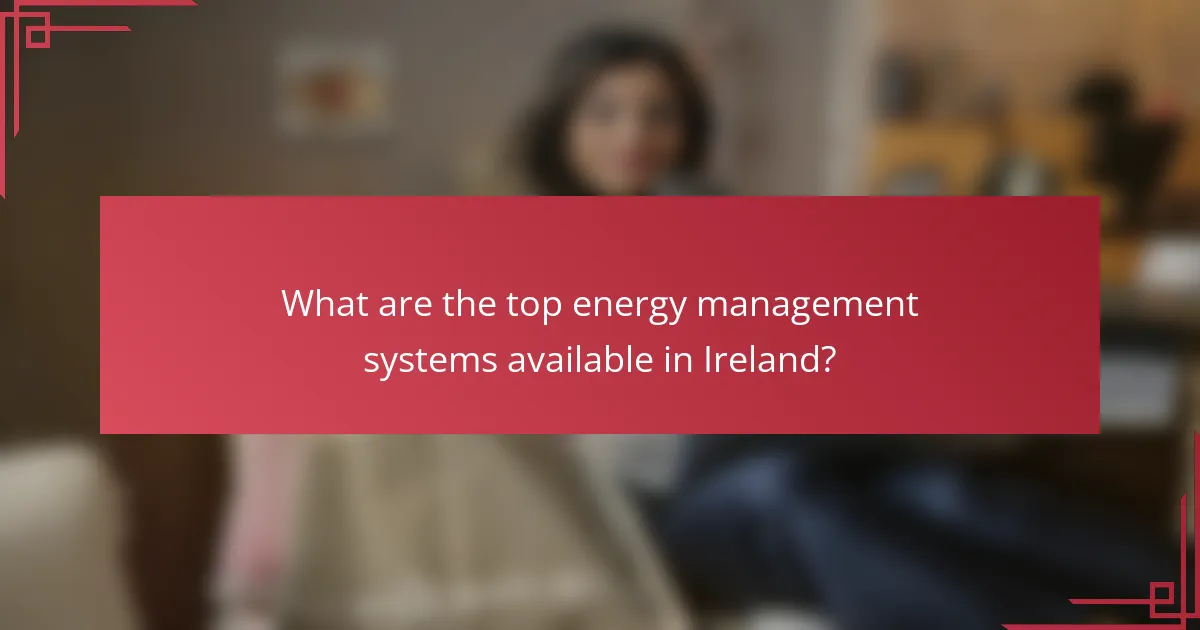
What are the top energy management systems available in Ireland?
The top energy management systems in Ireland focus on optimizing energy use, enhancing comfort, and promoting sustainability. These systems integrate smart technology to monitor and control energy consumption effectively, helping users save on utility bills while reducing their carbon footprint.
Nest Learning Thermostat
The Nest Learning Thermostat is designed to learn your heating and cooling preferences, automatically adjusting to optimize energy use. It can be controlled remotely via a smartphone app, allowing users to manage their home’s temperature from anywhere.
This thermostat is compatible with most heating systems and can help reduce energy bills by up to 15%. Its sleek design and user-friendly interface make it a popular choice among homeowners in Ireland.
Ecobee SmartThermostat
The Ecobee SmartThermostat features built-in Alexa voice control and room sensors to ensure even temperature distribution throughout the home. It learns your schedule and preferences, adjusting settings to maximize energy efficiency.
With the ability to monitor energy usage and provide insights, users can make informed decisions about their heating and cooling habits. The Ecobee can help save approximately 23% on heating and cooling costs annually.
Honeywell Home T9
The Honeywell Home T9 thermostat uses smart room sensors to detect occupancy and adjust the temperature accordingly. This feature ensures that energy is not wasted on unoccupied spaces, making it a practical choice for larger homes.
Users can control the T9 via a mobile app, and it integrates seamlessly with other smart home devices. Its ability to adapt to different rooms enhances comfort while promoting energy savings.
Schneider Electric Wiser Energy
The Schneider Electric Wiser Energy system provides real-time monitoring of energy consumption across various appliances in the home. It helps users identify energy hogs and offers tips for reducing overall usage.
This system is particularly beneficial for those looking to implement a comprehensive energy management strategy. By analyzing usage patterns, users can make targeted adjustments to improve efficiency and lower bills.
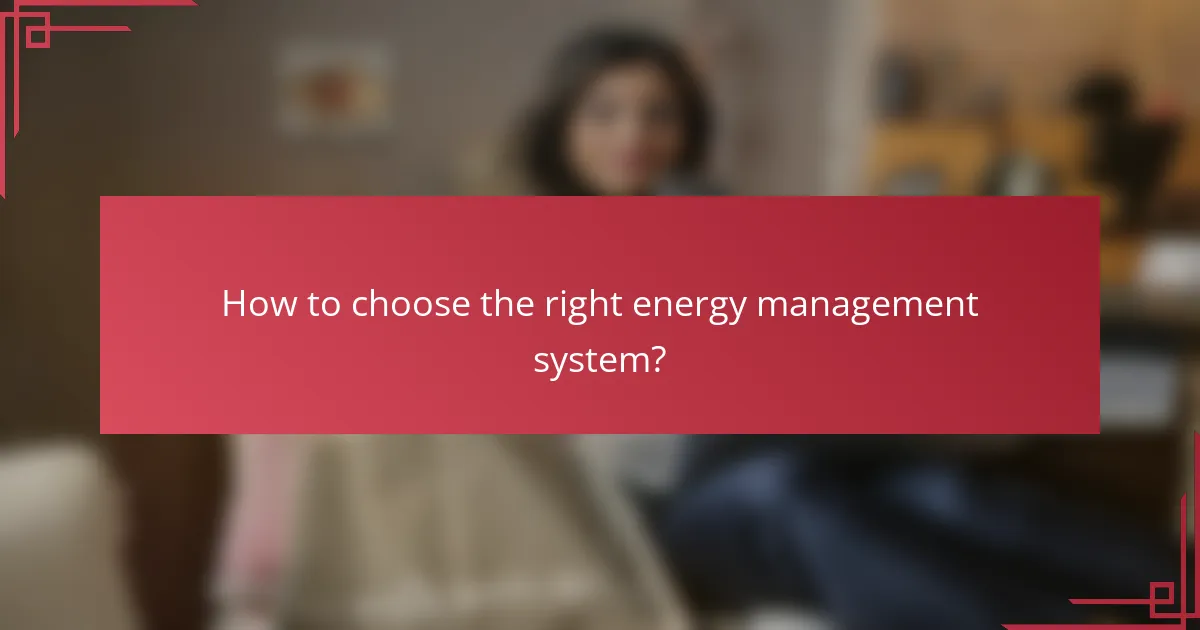
How to choose the right energy management system?
Choosing the right energy management system (EMS) involves understanding your specific energy needs, ensuring compatibility with existing devices, and considering your budget. A well-selected EMS can enhance energy efficiency and contribute to sustainability efforts in your home.
Assessing energy needs
Start by evaluating your household’s energy consumption patterns. Identify which appliances use the most energy and during what times, as this will help you determine the features you need in an EMS. For example, if heating and cooling are your largest energy expenditures, look for systems that offer detailed monitoring and control of HVAC systems.
Consider using energy monitoring tools to gather data on your usage over a few weeks. This information will guide you in selecting an EMS that can effectively manage and reduce your energy consumption.
Compatibility with existing devices
Ensure that the energy management system you choose is compatible with your current smart devices and home automation systems. Many EMS options integrate seamlessly with popular platforms like Google Home or Amazon Alexa, allowing for centralized control.
Check for compatibility with specific brands and models of appliances, as some systems may only work with certain manufacturers. This can save you from additional costs associated with upgrading or replacing devices.
Budget considerations
When selecting an energy management system, consider both the initial investment and ongoing costs. Prices for EMS can vary widely, from a few hundred to several thousand dollars, depending on features and capabilities. Determine what features are essential for your needs and find a balance between cost and functionality.
Look for systems that offer long-term savings through energy efficiency. Some may even provide rebates or incentives that can offset the initial purchase price, making them more affordable in the long run. Always factor in potential savings on your energy bills when evaluating your budget.

What are the installation requirements for energy management systems?
Installing energy management systems (EMS) requires careful planning and specific components to ensure effective operation. Key requirements include compatible hardware, software, and a reliable network infrastructure to facilitate communication between devices.
Hardware requirements
Energy management systems typically require various hardware components, including smart meters, sensors, and controllers. Smart meters measure energy consumption in real-time, while sensors monitor environmental conditions such as temperature and humidity. Controllers manage the operation of connected devices, allowing for automated energy-saving actions.
When selecting hardware, ensure compatibility with existing systems and consider scalability for future upgrades. Look for devices that comply with local energy standards and regulations to maximize efficiency and reliability.
Software requirements
The software for an energy management system is crucial for data analysis and user interface. It should provide real-time monitoring, reporting capabilities, and integration with other building management systems. Many EMS solutions offer cloud-based platforms, allowing for remote access and management.
Choose software that is user-friendly and customizable to meet specific needs. Additionally, ensure it supports data security protocols to protect sensitive information from unauthorized access.
Network infrastructure
A robust network infrastructure is essential for the seamless operation of energy management systems. This includes reliable internet connectivity and a secure local area network (LAN) to facilitate communication between devices. Consider using wired connections for critical components to enhance stability.
Evaluate the existing network capacity to handle the additional load from EMS devices. Upgrading network equipment may be necessary to ensure optimal performance and prevent bottlenecks.
